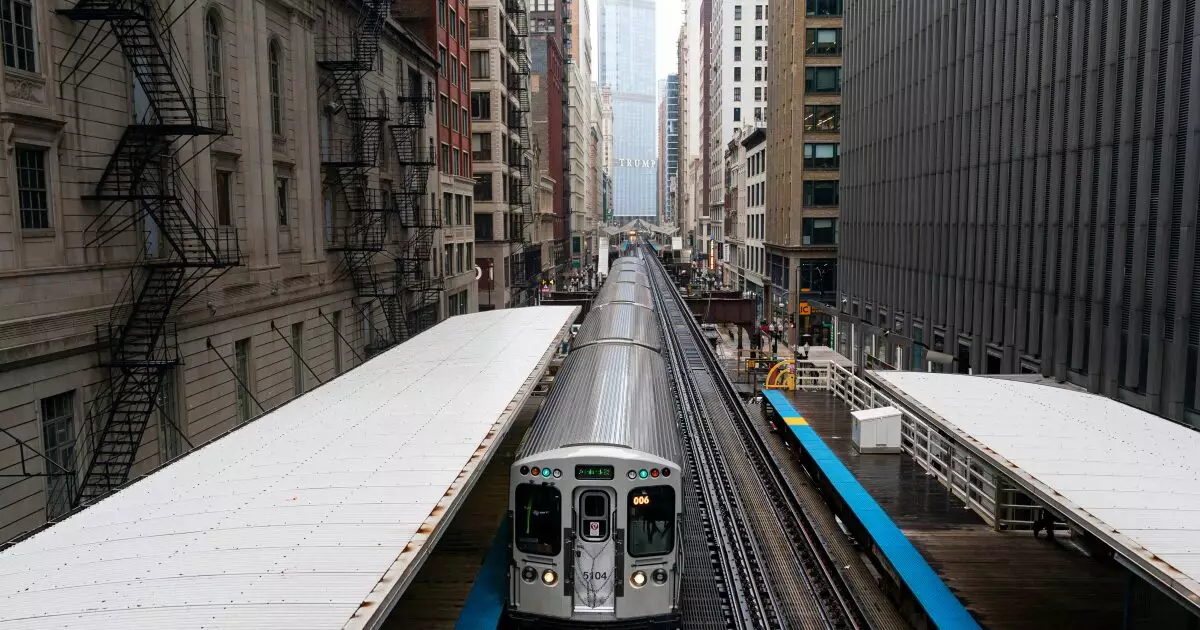The Chicago Transit Authority (CTA), an integral part of the city’s fabric, is currently treading on shaky financial ground. In a concrete display of concern, Moody’s Investors Service has downgraded its outlook from stable to negative, while affirming the A1 rating on the CTA’s outstanding sales tax bonds, which amount to a staggering $1.9 billion. This is not just a rating; it symbolizes a growing apprehension regarding the CTA’s resilience in the face of escalating operational deficits and dwindling financial resources. Moody’s has expressly pointed out that without the influx of federal pandemic relief funds, operational stability would become a mirage for the agency.
This revelation underscores an uncomfortable fact: the CTA is projected to face a staggering $550 million operational deficit by fiscal year 2026, which constitutes a shocking 25% of its operational budget. With such a significant shortfall looming, it becomes painfully evident that mere fare increases or spending cuts will not suffice to rectify the financial malaise. Rather, the agency finds itself at a crossroads, where the most plausible solutions involve significant tax reforms or aid from the state. However, the pursuit of state assistance remains uncertain at best.
Political Impasse: Governance Reforms or Funding Solutions?
Compounding the CTA’s challenges are political maneuvers in the legislative arena. Proposed by state legislators, an assortment of revenue-enhancing initiatives tied to governance reforms has emerged, yet the reception has been anything but enthusiastic. The proposed plan to dissolve existing transit boards in favor of a consolidated Metropolitan Mobility Authority has faced rejection from transit agency leaders. This resistance raises a critical question: are the policymakers prioritizing governance effectiveness over the more pressing matter of financial sustainability?
The Regional Transportation Authority (RTA) has thrown its hat into the ring, proposing a plan that advocates for $1.5 billion in operating funding sourced from state and local channels, incorporating stronger control over regional fare policies—although its traction is still in question. The nebulous nature of political consensus on this matter highlights a systemic failure to address an issue that is about more than just governance—this is about ensuring that vital urban mobility services do not collapse under their own weight.
Shifting Funding Dynamics in U.S. Transit
The nationwide landscape of public transportation is evolving, with varying degrees of success among different systems in navigating post-pandemic realities. Interestingly, systems that previously relied more on tax revenue rather than passenger fares are showing greater stability. The CTA, by contrast, finds itself in a precarious situation, caught in a cycle of dependency on fare revenue that is now significantly diminished due to ridership declines.
Moody’s acknowledges the CTA’s centrality to the metro area but also highlights its high leverage and less-than-ideal liquidity compared to its peers. With ridership recovering at a snail-paced rate, expecting revenue generated from fares to bridge this yawning budget gap is akin to chasing shadows. The rapid evolution of funding dynamics calls for innovative approaches, yet the CTA appears ensnared by legislative indecision and operational rigidity.
The Solutions: Will We See Progressive Change?
What is strikingly absent from the conversation is a proactive vision for the future, one that embraces meaningful reforms and radical innovation. The prospects of new funding avenues remain tethered to state-level decisions that seem to linger in legislative limbo. Legislation aimed at enhancing revenue, rather than merely restructuring the governance framework, appears crucial in rectifying the CTA’s financial crisis.
Moreover, any viable strategy must consider the long-term implications of service cuts or fare increases, which could further alienate riders and exacerbate the situation. It is time for politicians and transit leaders to engage in a candid discourse about the funding mechanisms that will forge a sustainable future for public transport in Chicago.
As this narrative unfolds, one cannot help but wonder: will the CTA emerge as a beacon for innovative adaptations, or will it remain ensnared in a web of bureaucracy and stagnation? The answer may very well dictate the fate of urban transit in one of the country’s largest metropolitan areas. The stakes are high, and the imperative for action has never been more urgent.

